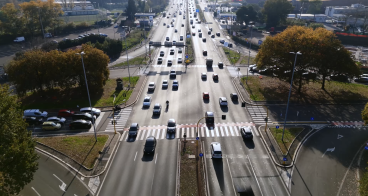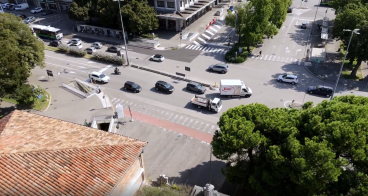How to overcome regulatory barriers for Intelligent Transportation Systems (ITS)
Intelligent Transportation Systems (ITS) traces its origin back to the 1960s when computer technology and electronic communication systems emerged as critical game changers in transportation. Today's ITS is founded on diverse advanced technologies with capabilities aimed at revolutionizing transportation safety, efficiency, and sustainability through data analysis derived from different forms of communication technology.
ITS represents an essential aspect of achieving smart city status with all its attendant benefits -promoting economic growth across many sectors while improving living conditions for residents and visitors alike. In 2020, the global market for intelligent transportation systems was valued at almost 22 billion U.S. dollars, before dropping to some three billion U.S. dollars in 2021 amid the COVID-19 pandemic. It is projected that by 2031, the size of this market will reach over 28 billion U.S. dollars (Statista, 2023).
However certain regulatory barriers exist that impede efforts aimed at wider adoption rates for these transformative technologies leading to encumbrances such as unrecognized standards which lead to uncertainties - resulting in higher development costs among manufacturers/developers. Overcoming regulatory barriers for Intelligent Transportation Systems (ITS) can be a complex and challenging task.
Here are some steps on how to overcome regulatory barriers for Intelligent Transportation Systems (ITS):
- Understand the regulatory landscape: Begin by thoroughly researching the existing regulations and policies related to ITS in your region or country. Understand the objectives, requirements, and limitations set by regulatory bodies. Identify specific barriers that hinder the implementation of ITS.
- Engage with regulatory authorities: Establish communication and collaboration channels with the relevant regulatory authorities responsible for ITS regulations. Seek opportunities to participate in industry forums, conferences, or workshops where you can engage with policymakers and regulators. Share your perspectives, insights, and expertise regarding the benefits and potential of ITS.
- Educate stakeholders: Raise awareness and educate key stakeholders about the value and potential of ITS. This includes government officials, policymakers, regulatory bodies, industry associations, and the public. Organize seminars, workshops, or informational sessions to showcase successful ITS deployments, their impact, and how they align with regulatory objectives.
- Demonstrate safety and efficacy: Conduct pilot projects or demonstrations to showcase the safety, efficiency, and effectiveness of ITS solutions. Collect and present data that demonstrate the positive outcomes of implementing ITS, such as improved traffic flow, reduced congestion, enhanced safety, and environmental benefits. This evidence can help alleviate concerns and build support for regulatory changes.
- Advocate for regulatory updates: Engage in advocacy efforts to push for regulatory updates that address the barriers to ITS deployment. Collaborate with industry associations, trade organizations, and other stakeholders to present a unified voice for change. Provide evidence-based arguments, economic analyses, and case studies to demonstrate the potential benefits of regulatory reform.
- Foster public-private partnerships: Foster collaboration between the public and private sectors to jointly address regulatory barriers. Governments often welcome private sector involvement and expertise. Partnering with public entities can help shape regulations, establish standards, and develop pilot projects that align with the regulatory framework.
- Participate in regulatory consultations: Actively participate in regulatory consultations and public comment processes. Stay informed about proposed regulations or policy changes related to ITS and provide constructive feedback. Use this opportunity to highlight the need for regulatory updates and suggest specific changes that can facilitate ITS implementation.
- Build coalitions and partnerships: Form alliances and partnerships with other industry stakeholders, research institutions, academia, and advocacy groups that share similar goals. By working together, you can amplify your collective influence and resources, making a stronger case for regulatory reform.
- International collaboration: Engage in international collaborations and knowledge sharing. Participate in global forums, conferences, and organizations focused on ITS. Understand best practices and regulatory approaches adopted in other countries or regions, and advocate for their implementation locally.
Conclusion
Overcoming regulatory barriers for ITS requires a collaborative effort that involves policymakers, industry stakeholders, and the public. By developing standards and guidelines, increasing public education and awareness, fostering collaboration and partnerships, encouraging innovation and flexibility, and establishing testbeds and pilots, policymakers can create an environment that supports the development and deployment of ITS, while also protecting privacy and security and addressing concerns about liability and insurance.
If you are further interested in the topic, access the shared filed section below to download the study "Guidelines for the Regulatory Frameworks of ITS".
Nedzad Piric holds an MBA in Digital Economy and he is currently a PhD candidate in the Digital Economy. Nedzad has 25+ years of experience in the fields of Digitalization, Digital Transformation, and Smart Cities. He is a World Economic Forum member, Member of the Advisory Board for Sanford Royce, Associate Director for Amnick, and Director Digital Transformation Alliance and Director Smart City Alliance at European Technology Chamber (EUTECH).
Published on 23 May 2023.






